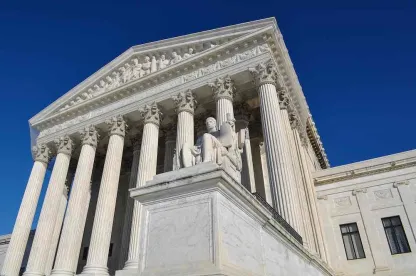On Monday, in a highly-anticipated decision, a fractured Supreme Court issued its opinion in Arthrex v. Smith & Nephew, striking a portion of the America Invents Act (AIA) as unconstitutional—but providing an effectively toothless remedy. The 5-4 majority agreed with the Federal Circuit’s previous holding that the statutory framework governing the Patent Trial and Appeal Board (PTAB) as it related to the unreviewable authority granted to the PTAB’s Administrative Patent Judges (APJs) in inter partes review (IPR) proceedings violated the Appointments Clause of the U.S. Constitution. Joining Chief Justice Roberts in his majority opinion as to the constitutional violation were Justices Alito, Barrett, Gorsuch, and Kavanaugh—but not even this majority agreed on the remedy for the violation.
The fulcrum of the Court’s opinion is the Appointments Clause, which states that only the President, with Senate consent, can appoint “principal officers” within the Executive branch. In the AIA, Congress provided that APJs would be considered inferior officers, and could therefore be appointed by the Secretary of Commerce. Despite this, the Supreme Court found that APJs have “significant authority” in deciding patentability—a public right—and power to render a final decision that binds the Executive Branch without any review by their nominal superior or a “principal officer” in the Executive Branch. Slip Op. at 10. This unfettered authority, with no review by a superior or principal officer, therefore violated the Appointments Clause. The dissent penned by Justice Thomas—joined in part by Justices Breyer, Kagan and Sotomayor—disagreed. These rare bedfellows in dissent took the view that APJs were both properly appointed and acted as inferior officers: ergo, no violation of the Appointments Clause.
Disagreement about how to cure the constitutional defect resulted in another schism. The Roberts plurality opinion severed 35 U.S.C. § 6(c) and provided the Director of the United States Patent and Trademark Office (USPTO), a principal officer appointed by the President and confirmed by the Senate, the ability to review APJ decisions in IPRs. By providing the Director with “authority to take control” of the IPR, this would make APJs function as inferior officers. Slip Op. at 20-21. While Chief Justice Roberts did not fully disagree with the Federal Circuit’s remedy, which eliminated certain statutory restrictions to allow APJs to be removed at-will, the Opinion found that review by the Director of the USPTO would better serve the structure of supervision at the USPTO and reflect the nature of the APJs’ duties. Slip Op. at 22.
For his part, Justice Gorsuch stood alone in arguing that the Court should send the issue back to Congress to solve what he deemed a “policy choice,” including potentially to “reassign the power to cancel patents [back] to the Judiciary where it resided for nearly two centuries.” Meanwhile, Justices Roberts, Alito, Kavanaugh, Barrett, Breyer, Sotomayor and Kagan (even if all of them did not agree that the Constitution had been violated) concluded that merely providing the USPTO Director with a bit more control and oversight would remedy the issue. But as Justice Thomas argued in his dissent, the majority did not properly address whether APJs were serving as principal officers or inferior officers. Instead, the majority simply found that the Appointments Clause was violated. Had the majority opinion gone so far as to conclude that the APJs violated the Appointments Clause because APJs are inferior officers, then all prior and pending PTAB rulings, including the 100 or more IPR decisions that were remanded due to Arthrex, could be vacated.
Ultimately, the Court vacated the Federal Circuit opinion and remanded the matter to the USPTO Director to determine if a rehearing is necessary. Interestingly, President Biden has not yet nominated a successor to Trump appointee Director Iancu, leaving Acting Director Drew Hirshfeld on center stage with this remand. More broadly, as many questions as the Supreme Court’s decision answered, it leaves as many open. For example, how broadly and how retroactively (if at all) will the decision be applied? Knowing that rehearing requests are very rarely granted, will the Court’s decision meaningfully change anything in practice? How will the Director (or Acting Director, as the case may be) handle the expected influx of rehearing requests?
These issues and many others will surely be addressed in the coming months, and we’ll keep you updated along the way.







 />i
/>i
